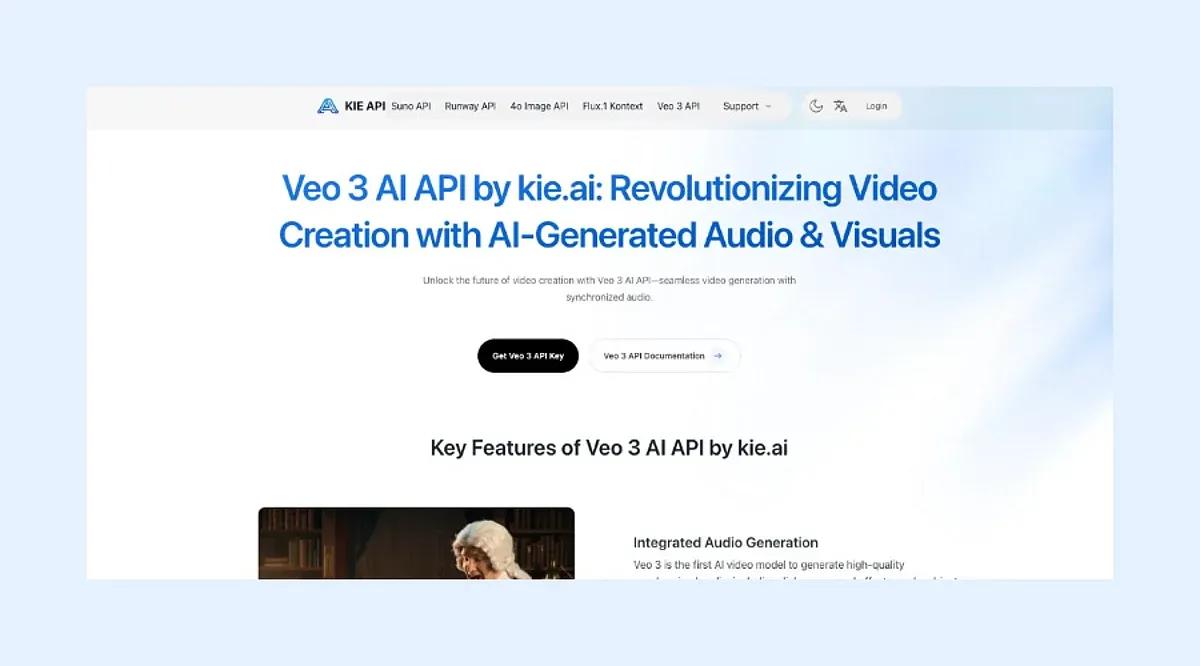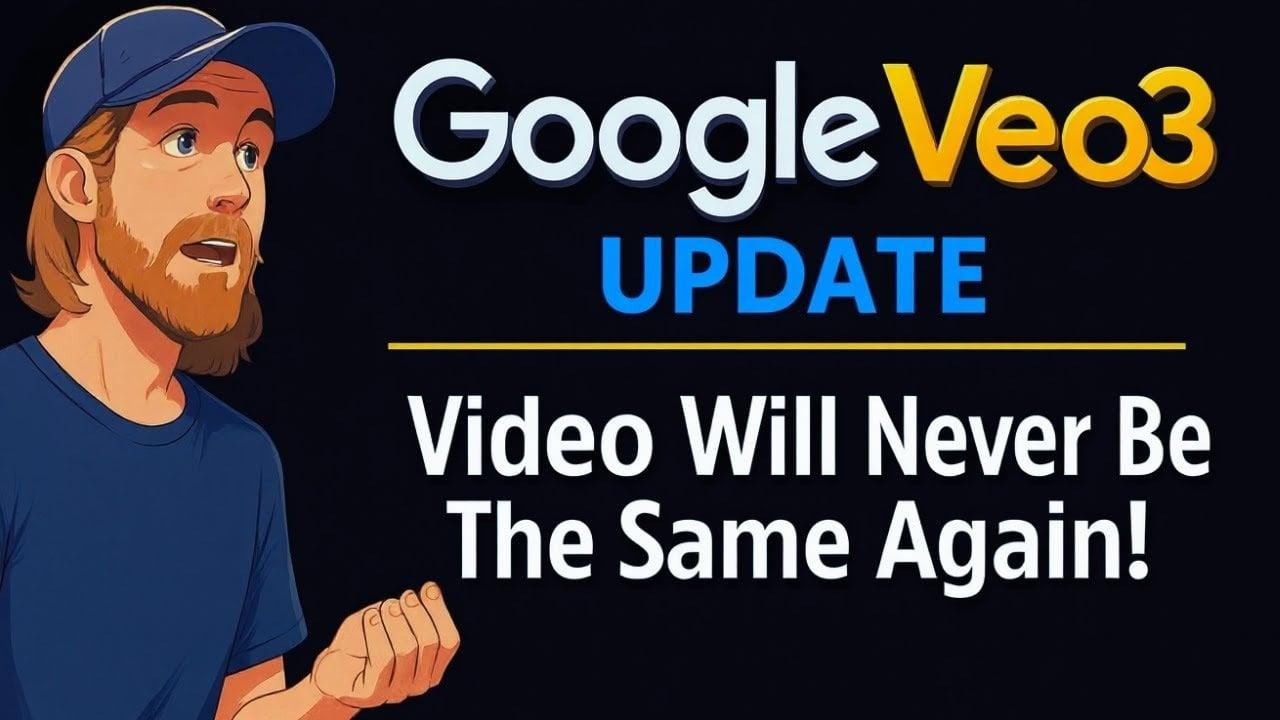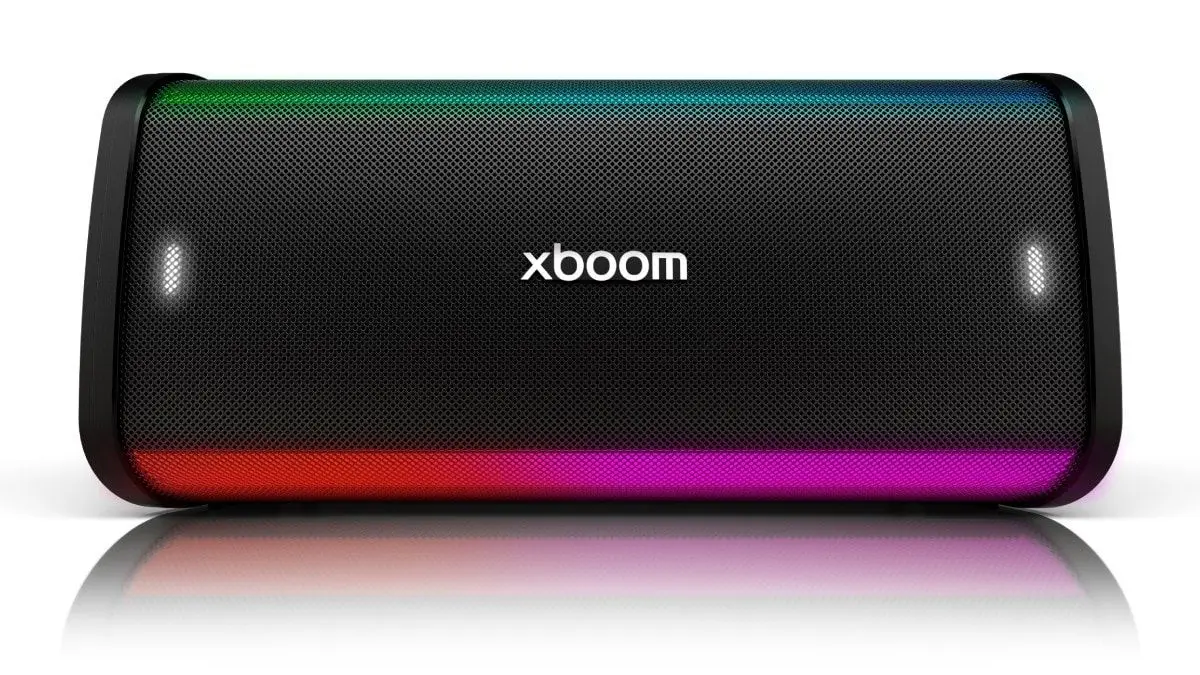Google's Veo 3: Revolutionizing AI Video Generation with 40 Million Creations and New Features
4 Sources
4 Sources
[1]
Over 40 Million AI Videos Have Been Made With Google Veo 3 Since May: How My Expert Testing Went
Google's most advanced AI video model continues to be dominant. Veo 3 made a splash when it was released at Google I/O in May, boasting one big, audible difference from other AI video generators: It can create sound, synchronized to a scene's action. And people have been taking advantage of it -- more than 40 million Veo 3 videos have been created in the last seven weeks, across Gemini and its new filmmaker-focused tool called Flow, Google said in a blog post on Thursday. Upgrades like the ones also announced Thursday mean that number will likely only increase. Google is introducing a new photo-to-video capability through the Gemini app. With the feature, you can upload a picture you took, or one you generated through Imagen, and Veo 3 will animate it. In your prompt, you can describe the audio you want in the video, like dialogue. The image-to-video capability is rolling out now on the web and throughout the week on mobile. Even before these updates, Veo 3 users were quick to share their impressive-looking videos online. I spend a lot of time testing and reviewing AI, specifically image and video generators, and I've seen enough slop and hallucinations to approach it all with skepticism. But after seeing the videos, I knew I had to dive in and put Veo 3 to the test. Without spoiling anything, I walked away from Veo feeling like this was the next natural step for Google, with one feature in particular giving the company an edge that might make it a more serious contender in the AI creative space. But there are serious limits and annoyances that I hope are addressed soon. Here's how my experience went and what you need to know. There are a couple of different ways to access Veo 3. Unfortunately, all of them will require you to pay up in some way. Veo 3 is currently available through Google AI Pro, Google AI Ultra, Flow and Google Vertex. Google recently expanded access to a version of Veo 3 (Veo 3 fast) to its cheaper $20 per month plan, Google AI Pro. Pro users get limited access to Veo 3, which is good if you just want to play around with it. To get full access, you'll need Google AI Ultra -- the newest, priciest tier at $250 per month. (It's currently half off for $125 per month for three months.) Flow is Google's new filmmaking-focused AI tool, available for those paying Pro and Ultra subscribers. Vertex is Google's AI enterprise platform, and you'll know if you have access to it. Google's Gemini privacy policy says the company can collect your info to improve its technologies, which is why it recommends not sharing any confidential information with Gemini. You also agree to Google's prohibited use policy, which outlaws the creation of abusive or illegal content. The most impressive thing about Veo 3 is its new audio generation capabilities. You don't have to tell Gemini in your prompt that you want sound; it will automatically add it. This is a first among competitors like OpenAI's Sora and Adobe's Firefly and it certainly gives Google a huge edge. While the AI audio is a nice perk, it isn't perfect. If you're familiar with the somewhat clunky nature of AI-generated music and dialogue, you'll be able to identify it immediately. But there were times when it flowed more naturally. The clashing metal sounds and grunts in my alien fight scene were timed perfectly to their attacks, something that would've been difficult to add on my own afterward. But the dinosaur-like aliens also literally say "roar" and "hiss" instead of making those noises. My kayaker's paddling very nearly matched up with the water sloshing sound. The nature ambience in that video was particularly lovely and added a layer of depth that's been missing from AI videos. To give Veo a challenge, I wanted overlapping sound in this beach bonfire party scene. What I got was fine, but nothing show stopping. My dream beach bonfire partiers didn't sound like any party I've ever been to, but still, points for being first and relatively unproblematic. Of course, while the audio was nice, it doesn't take away from the weird eccentricities that continue to plague AI generators. I ran into a few hiccups, mostly with people's faces, a notoriously hard thing for AI to mimic. But compared to the glaringly obvious errors I ran into with Veo 2, the new generation does appear to have made real improvements as Google claimed it did. I run into hallucinations a lot when I'm testing AI image and video generators, so the first thing I do is look for whether a service gives me the ability to edit it. Veo 3 doesn't offer any of these, which is a bummer. It's certainly something that's going to make it less useful for professional creators, who are used to more fine-tuning editing tools and need to make precise tweaks for their projects. You can send a follow-up prompt asking for specific changes. For example, I asked Veo to change the angle in the previous video so I could see her face, which the program handled well. With Veo 3, you'll typically have to wait 3 to 5 minutes for a new, edited video to load, though. Veo 3 has the longest generation time of any AI video generator I've tested. But the addition of audio to the videos excuses the longer wait time in my eyes. The worst part of Veo 3 is how quickly I hit my daily generation limit. After only five videos, I was barred for an entire 24-hour period -- something that really annoyed me and made it much harder to assess. Google's VP of Gemini and Google Labs, Josh Woodward, said in a post on X/Twitter that Ultra subscribers like me have the highest number of generations that reset daily, in the regular Gemini app and in Flow. And for me, that limit in Gemini was five videos. Flow's limit is 125, according to Woodward. I reached out to Google to get clarity on what the daily limit is for Ultra users creating through Gemini that Woodward mentions. Here's the response: "Google AI Ultra subscribers get the highest level of access to Veo 3, our state-of-the-art video generation model, which they can use in both the Gemini app and Flow, our new AI filmmaking tool." The limits are another sign that this isn't a tool meant for professional creation and iterative editing. You need to spend time thoughtfully crafting your prompt and if Google flubs a face or glitches, you're likely to run out of credits fast and end up out of luck. Veo 3 is better suited for AI enthusiasts who want to dip their toes in video creation, not creators experimenting with AI. After an underwhelming experience with Veo 2, I had reservations about what to expect in the usefulness and accuracy of Veo 3. But the new model was impressive, the audio especially, even though it's still missing some key features. Let me be clear: There is no rational reason to spend hundreds of dollars on a Google AI Ultra plan only to use Veo 3. If you want to dabble for fun, I recommend starting with the cheaper Google AI Pro plan, or use Veo 2 for hundreds less per month. The Ultra plan does offer other features, like YouTube Premium, 30 terabytes of space and access to the newest Gemini models. So if you want any of those things, then, yeah, pay up and go play around with Veo 3. But it's not worth it on its own. Veo 3 isn't the revolutionary upgrade those social media posts might lead you to believe. It's the next generation, better than last month's Veo 2, and it shows real promise in Google's future AI video endeavors. But be prepared to pay up if you want to try it out.
[2]
How Google Veo 3 Makes Pro-Level Video Creation as Easy as Talking
What if creating professional-grade videos was as simple as speaking a few words or uploading a single image? With the latest Google Veo 3 (VO3) update, this bold vision is no longer a distant dream but an accessible reality. Packed with innovative features like speech-to-video functionality and custom image inputs, this update is poised to transform how we think about video production. Whether you're a seasoned content creator or just dipping your toes into AI-driven tools, VO3 promises to eliminate the usual barriers of time, cost, and technical complexity, empowering users to produce polished, visually stunning videos with minimal effort. In this perspective, All About AI explore how the VO3 update transforms creative workflows and redefines the possibilities of AI-powered video creation. From seamless scene transitions to enhanced audio clarity, the platform introduces tools that not only streamline production but also elevate the quality of your content. But what truly sets VO3 apart is its ability to provide widespread access to professional video-making, making it accessible to small businesses, educators, and independent creators alike. As we unpack the features and practical benefits of this update, you'll discover how it's reshaping the landscape of storytelling and digital media. Could this be the future of effortless creativity? Let's take a closer look. The VO3 update introduces a range of innovative features that significantly enhance the platform's functionality. These include: These features provide users with greater creative control, allowing the production of visually compelling and narratively coherent videos with minimal effort. One of the standout improvements in the VO3 update is its focus on making sure audio and visual consistency. Key advancements include: These updates address common challenges in AI video production, making it easier to create polished, viewer-friendly content that meets professional standards. Here are additional guides from our expansive article library that you may find useful on AI-driven video generation. The VO3 update places a strong emphasis on streamlining workflows and optimizing costs, making it an invaluable tool for creators working under time or budget constraints. Key improvements include: These enhancements simplify the video production process, allowing users to focus more on creativity and less on logistical challenges. The VO3 update unlocks a wide range of applications, making it a versatile tool for various industries and creative endeavors. With its advanced features, users can: From a practical standpoint, the update reduces the time and effort required for revisions by allowing accurate depiction of desired visuals. Additionally, the cost savings achieved through optimized credit usage make the platform more accessible, particularly for smaller teams or individual creators. The VO3 update represents a major advancement in AI-powered video production. By integrating features such as custom image inputs, speech-to-video conversion, and advanced scene transitions with workflow optimizations, the platform enables users to create high-quality videos with unprecedented ease and efficiency. Whether you are an experienced creator or new to AI-driven content, this update provides the tools necessary to elevate your projects to a professional standard. Google's commitment to enhancing user experience, creative flexibility, and cost efficiency ensures that the VO3 platform remains at the forefront of AI video tools. With its wide-ranging applications and practical benefits, the VO3 update is poised to redefine the landscape of AI-driven video creation, offering users the resources they need to bring their visions to life with precision and creativity.
[3]
Unlocking the Power of Google's Veo 3 API with Kie.ai: The Future of AI Video Generation
The landscape of video production is undergoing a radical transformation. Tasks that once demanded complex equipment, production teams, and time-intensive editing can now be performed through AI -- with unprecedented speed and precision. At the heart of this technological leap is Google's Veo 3 API, an advanced model that turns simple prompts into richly detailed, cinematic video output. Whether for developers building applications or content teams scaling visual storytelling, the Veo 3 API represents a paradigm shift in how videos are conceived and created. Yet despite its groundbreaking capabilities, the remains out of reach for many due to high usage costs and regional access restrictions. That's where Kie.ai steps in -- providing streamlined, cost-effective Veo 3 API access with developer-first tools and global availability.
[4]
Unlocking Cinematic AI Video: The Power Of Google Veo 3 API With Veo3API.ai
Veo 3 is Google's next-generation AI video generation model, designed to revolutionize how we create cinematic content. Leveraging the power of multimodal generative AI, Google Veo 3 can turn simple text or image prompts into ultra-realistic 4K videos with synchronized audio, advanced lighting effects, and dynamic camera movements. Whether you're crafting a battlefield scene, an animated explainer, or a dramatic short film, Veo 3 understands physics, character consistency, and visual storytelling -- making it a powerful tool for content creators, marketers, and filmmakers. To unlock the full creative power of Veo 3, developers and content creators can now use Veo 3 API -- a seamless, programmatic way to generate high-quality videos directly within their platforms, apps, or automation tools. Whether you're producing short-form content, educational visuals, or marketing assets at scale, the Veo 3 API gives you direct access to advanced video generation features with speed, precision, and flexibility. Thanks to platforms like Veo3API.ai, it's now easier and more affordable than ever to integrate Google Veo 3 into your workflow -- with prices starting as low as $0.40 per video and support for fast, high-volume production. What Makes Veo 3 API a Game-Changer for AI Video Creation? Native Synchronized Audio Generation Unlike traditional video tools that require separate audio work, the Veo 3 API generates videos with natural, perfectly-timed sound. Dialogue, ambient noise, and even subtle audio cues are built directly into the output -- lip-synced and immersive from the very first frame. Text-to-Video and Image-to-Video Support The API accepts both written prompts and reference images, making it easy to bring any concept to life. Describe a setting, emotion, or action -- and the Veo 3 API responds with rich visual storytelling that feels hand-crafted. It's fast, flexible, and ready for everything from ads to short films. Advanced Scene Understanding What sets Google Veo 3 apart is how well it understands physical space. With built-in awareness of motion, lighting, and object interaction, it can simulate natural environments and lifelike behaviors -- no post-production tweaks required. Character and Scene Consistency No more inconsistent faces or shifting backgrounds. Veo 3 API preserves continuity across shots, ensuring that characters, locations, and key elements remain stable and coherent. Ideal for brand narratives, dialogue-driven scenes, and long-form content. Intuitive Cinematic Camera Controls Creators can guide the lens like a director. Using descriptive prompts, you can control pans, tilts, zooms, and angles -- allowing for fluid transitions and dynamic framing that add depth to every scene. Google Veo 3 API Pricing Comparison:Veo3API.ai Redefines Cost-Efficient Video Creation As AI video tools continue to gain traction, pricing transparency and cost-efficiency are becoming critical factors for developers and content creators alike. From indie studios to enterprise teams, access to the Veo 3 API can mean the difference between experimental limitations and creative freedom. So how do today's leading platforms compare? Most providers -- including Replicate, Fal.ai, and AIMLAPI -- charge around $6.00 for an 8-second video with audio, or $0.75 per second. These rates can quickly escalate when producing longer clips or running multiple renders -- making large-scale deployment expensive and restrictive. That's where Veo3API.ai changes the game. By offering both Veo 3 Fast and Veo 3 Quality modes, this platform provides unmatched flexibility and value. An 8-second Veo 3 Fast video with audio costs just $0.40, while a high-fidelity Veo 3 Quality video comes in at $2.00 -- delivering more than 60% savings compared to competing platforms. Meanwhile, Google's official Veo 3 access via Vertex AI requires a subscription: $19.99/month for the Fast mode or $249.99/month for full feature access, with direct API usage priced at $0.75 per second. For many users, this cost -- combined with limited preview availability -- makes third-party access a more attractive route. With affordable, transparent pricing and full support for Google Veo 3 Fast API, Veo3API.ai is positioning itself as the go-to solution for scalable, real-time AI video creation -- whether you're rendering a short clip or building a platform powered by generative video. How to Use the Veo 3 API with Veo3API.ai Using the Veo 3 API through Veo3API.ai is designed to be seamless and intuitive, whether you're a developer building new features or a content creator looking to generate dynamic, AI-powered videos. Here's how to get started: Step 1: Create an Account on Veo3API.ai Begin by signing up for an account on veo3api.ai. This gives you access to the dashboard, where you can manage your projects and access the Google Veo 3 API. Step 2: Generate Your API Key Once logged in, go to the API Key section and generate a personal access key. This key is required to authenticate and authorize all your video generation requests. Step 3: Try the Interactive Playground Before full integration, explore the Playground tool to test video generation using text prompts or image references. This step helps you understand how your inputs affect output quality, camera movements, and scene behavior. Step 4: Integrate the API into Your Workflow With your API key ready, you can start making requests from your application. Simply structure your input with the desired prompt, video duration, and other optional settings like aspect ratio or audio sync. The API will return a secure link to your generated video. Step 5: Review and Deploy Your Video Once your video is generated, download or embed it directly. Whether you're creating marketing content, social media visuals, or part of a larger production pipeline, the Veo 3 API makes it easy to go from concept to screen with just a few steps. Conclusion: The Smartest Way to Access Veo 3 As AI video generation enters a new era, tools like Veo 3 API are transforming how we create, communicate, and captivate. Whether you're producing immersive narratives, dynamic marketing visuals, or experimental creative work, Google Veo 3 offers unmatched realism, flexibility, and scalability. And with Veo3API.ai, that power is now more accessible -- and affordable -- than ever. From fast, synchronized audio generation to cinematic camera control, it's a solution built for the future of video. For creators, developers, and businesses ready to lead in visual storytelling, Veo 3 API via Veo3API.ai is the smartest way to bring ideas to life -- frame by frame.
Share
Share
Copy Link
Google's Veo 3, an advanced AI video model, has generated over 40 million videos since its May release. The platform now offers new features like photo-to-video capabilities and synchronized audio generation, positioning it as a leader in AI-driven video creation.
Google's Veo 3: A New Era in AI Video Generation
Google's Veo 3, the company's most advanced AI video model, has made significant strides since its release at Google I/O in May. In just seven weeks, users have created over 40 million videos using Veo 3 across various platforms, including Gemini and the new filmmaker-focused tool called Flow
1
.New Features and Accessibility
Google has introduced several new features to enhance Veo 3's capabilities:
-
Photo-to-Video Conversion: Users can now upload a picture or use one generated through Imagen, and Veo 3 will animate it. This feature is being rolled out on the web and mobile platforms
1
. -
Synchronized Audio Generation: Unlike competitors, Veo 3 automatically adds synchronized sound to videos, giving Google a significant edge in the AI creative space
1
. -
Multiple Access Points: Veo 3 is available through Google AI Pro ($20/month), Google AI Ultra ($250/month), Flow, and Google Vertex. The company recently expanded access to Veo 3 Fast for Pro users, while full access requires an Ultra subscription
1
3
.
Performance and Limitations
While Veo 3 showcases impressive capabilities, it's not without limitations:
-
Audio Quality: The AI-generated audio, while innovative, can sometimes sound clunky or unnatural. However, it often adds depth to scenes and synchronizes well with visual elements
1
. -
Generation Time: Veo 3 has the longest generation time among AI video generators, typically taking 3-5 minutes per video
1
. -
Daily Generation Limit: Users may hit a daily generation limit quickly. For instance, Ultra subscribers are limited to five video generations per day in the Gemini app, while Flow offers a higher limit of 125
1
. -
Editing Capabilities: Veo 3 lacks fine-tuning editing tools, which may limit its usefulness for professional creators
1
.
Related Stories
Applications and Impact
The Veo 3 update opens up a wide range of applications across various industries:
-
Content Creation: It enables the production of visually compelling and narratively coherent videos with minimal effort
2
. -
Marketing and Advertising: Businesses can create high-quality video content for promotional purposes quickly and cost-effectively
4
. -
Education: Educators can produce engaging visual content for learning materials
2
. -
Independent Creators: The platform democratizes professional video-making, making it accessible to individuals and small teams
2
.
Future Implications

Source: Analytics Insight
The advancements in Veo 3 represent a significant shift in AI-powered video production. By integrating features such as custom image inputs, speech-to-video conversion, and advanced scene transitions, Google is positioning itself at the forefront of AI video tools
2
4
.As the technology continues to evolve, it's likely to reshape the landscape of digital media and storytelling. However, questions about the impact on traditional video production industries and the potential for misuse remain important considerations for the future of AI-generated video content
3
4
.
Source: Geeky Gadgets
In conclusion, Google's Veo 3 is pushing the boundaries of what's possible in AI-driven video creation, offering unprecedented ease and efficiency in producing high-quality videos. As the platform continues to develop and address current limitations, it has the potential to revolutionize how we approach video production across various sectors.
References
Summarized by
Navi
[1]
[2]
[3]
Related Stories
Google's Veo 3 Fast: Accelerating AI Video Creation with Enhanced Accessibility
10 Jun 2025•Technology

Google's Veo 3: A Leap Forward in AI-Generated Video with Synchronized Audio
21 May 2025•Technology

Google's Veo 3: Revolutionizing AI Video Generation with Audio Sync and Creative Challenges
29 May 2025•Technology

Recent Highlights
1
Meta acquires Manus for $2 billion, adding revenue-generating AI agents to its platforms
Business and Economy

2
Nvidia locks in $20 billion Groq deal, securing AI chip rival's technology and talent
Business and Economy

3
Geoffrey Hinton warns AI job replacement will accelerate in 2026 as systems gain new capabilities
Technology



